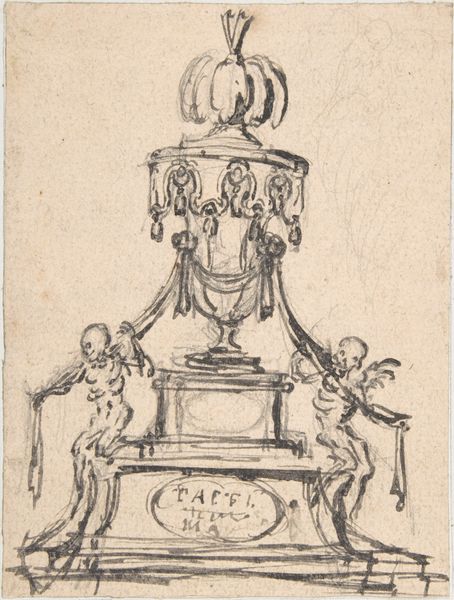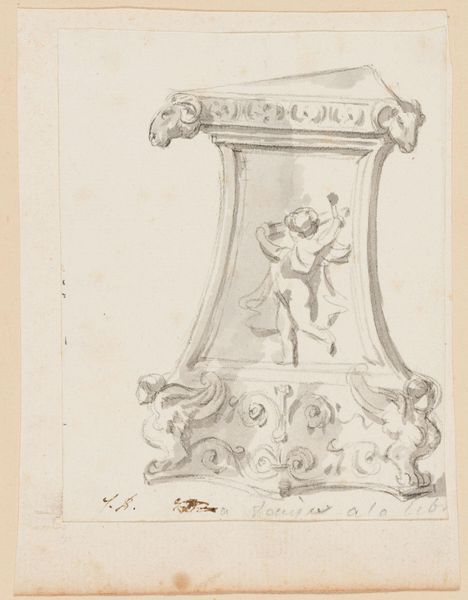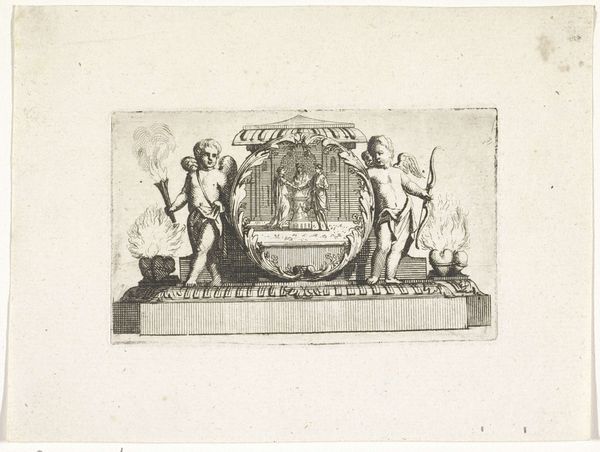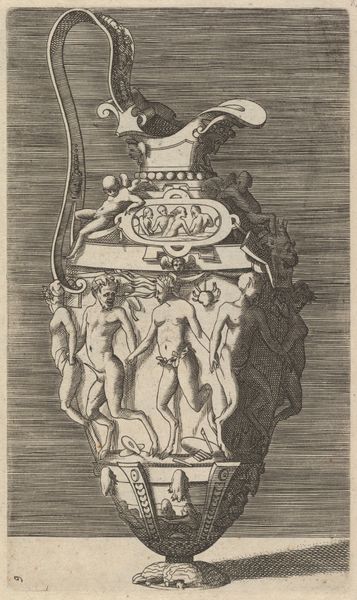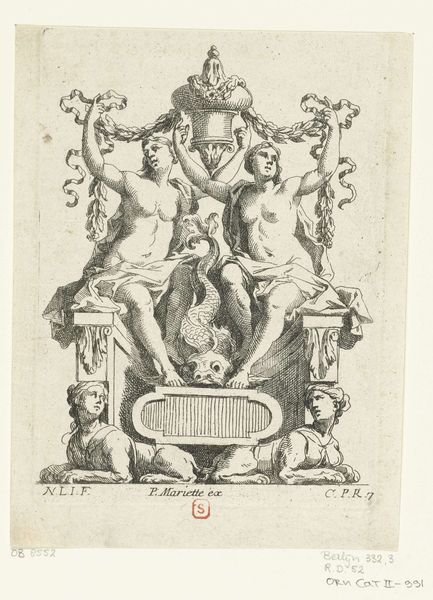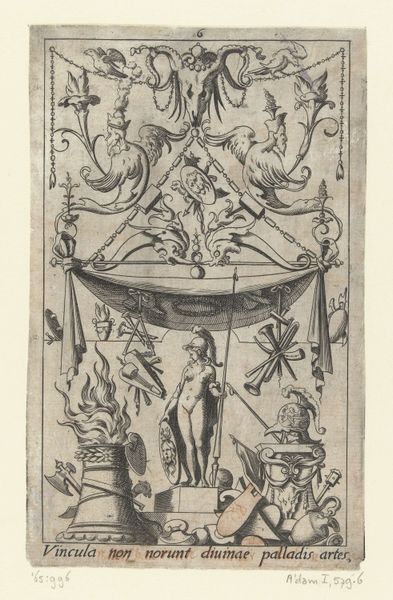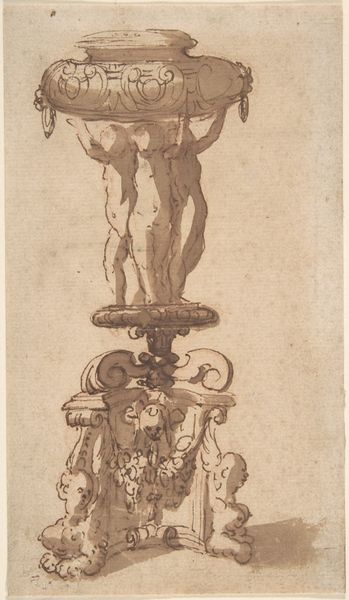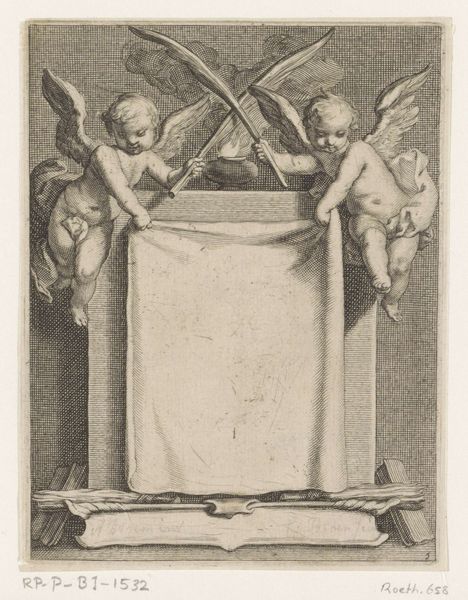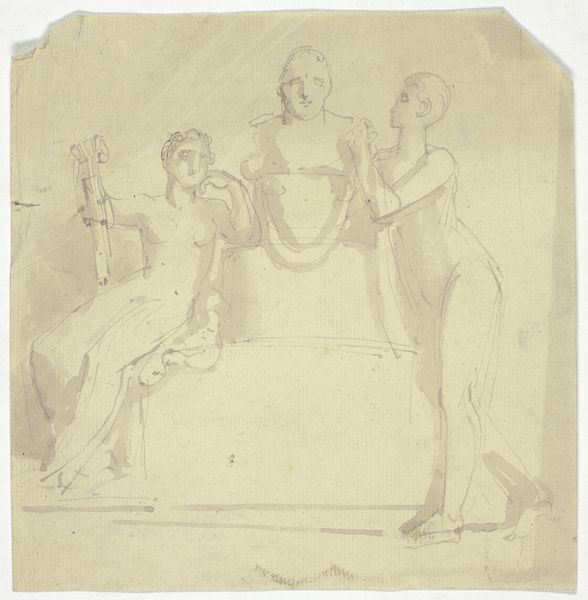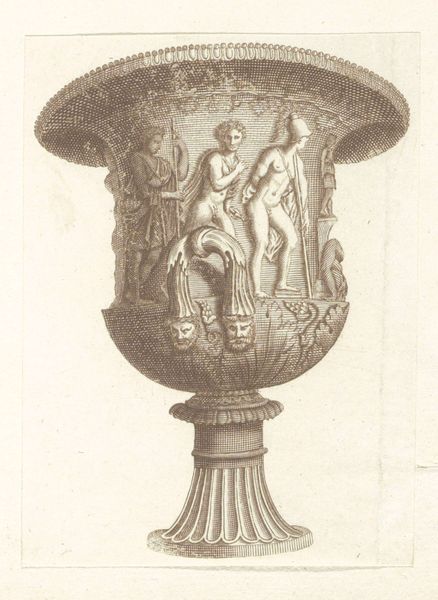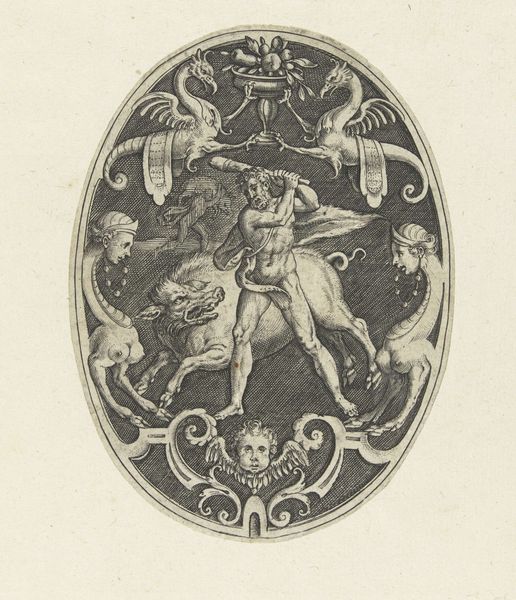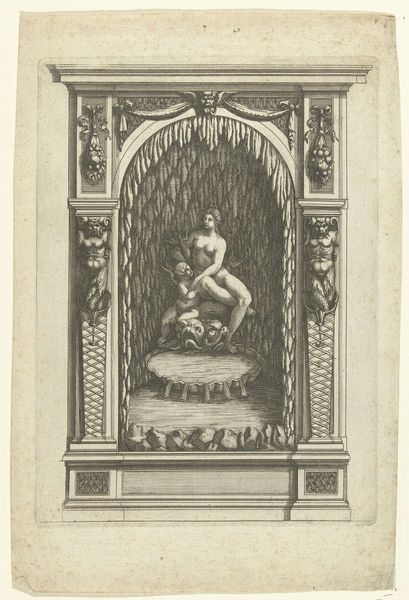
Dimensions: height 79 mm, width 57 mm
Copyright: Rijks Museum: Open Domain
Jurriaan Andriessen created this drawing with pen in gray in the 18th century, depicting putti dancing around a herm. The image is dominated by a herm, a classical bust atop a square pillar, around which frolic a group of putti, symbols of innocence and divine love. The herm itself, often representing Hermes or another deity, is an ancient symbol of boundaries and transitions, a marker between worlds. The dancing putti evoke bacchanalian revelry, reminiscent of ancient fertility rituals. We can see the gesture of the dance, of coming together in a circle, appearing in Botticelli's "Primavera", where the Graces dance in a similar fashion, linking classical mythology with Renaissance ideals. The image of the herm, a fragment of the classical world, speaks to our collective memory, echoing through centuries. It reappears in various forms, from garden sculptures to architectural elements, each time carrying the weight of its historical and cultural past, shifting from sacred to decorative. The dance is an emotionally charged expression of vitality, engaging us on a subconscious level with its timeless symbolism. And so, these symbols, deeply rooted in classical antiquity, resurface in Andriessen's work, demonstrating the cyclical nature of cultural memory, evolving and taking on new meanings.
Comments
No comments
Be the first to comment and join the conversation on the ultimate creative platform.
